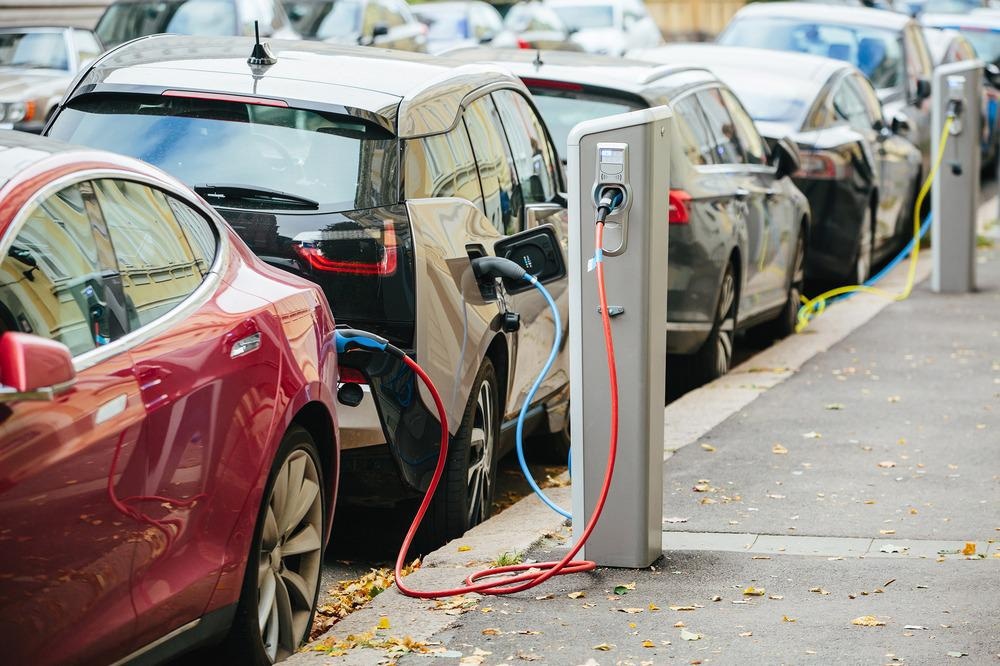The widespread adoption of electric vehicles is hampered by issues with charging time and driving range. To provide a review of the current state of these issues in the electric vehicle industry, a paper published online in the Journal of Energy Storage has provided a review of more than 50 studies on fast charging strategies.

Study: Review of fast charging strategies for lithium-ion battery systems and their applicability for battery electric vehicles. Image Credit: Scharfsinn/Shutterstock.com
Range Anxiety
Problems with charging time and driving range have led to what is commonly termed “range anxiety.” This is preventing drivers from switching to their internal combustion vehicles to new, greener electric alternatives.
Charging infrastructure has not kept pace with the sale of new electric vehicles. Tesla has reported that the uneven distribution of charging points is a major concern for them. The Tesla Model S has a reported range of over 320km, however, meaning that the worry for drivers to make it to a charging point to top up their batteries is lessened, and for shorter journeys is not a worry at all.
Their Model S also has the capability to completely recharge its batteries within 28 minutes.
However, range anxiety is a valid roadblock to electric vehicle uptake (Tesla report that cost does not seem to be a factor) and to overcome this perception, charging infrastructure must be increased and charging times reduced.
Reducing Charging Times
Achieving charge times near that of internal combustion vehicles is the focus of research and development in the electric vehicle industry to overcome range anxiety.
Currently, commonly installed charging points take a few hours to provide a full charge for batteries. Even with increasing driving ranges reported for EVs currently on the road, this is problematic. Sales of electric vehicles are increasing, but not at the rate necessary to move the automotive industry away from fossil fuels.
Limitations of Batteries
Whilst it is pertinent to drastically improve charging times for widespread uptake of electric vehicles, it is not simply a case of increasing the level of current used to charge them. This can cause disproportionate aging of lithium-ion batteries, leading to power, capacity, and safety issues during journeys. Fast charging operates at the physical limits of lithium-ion batteries and decreasing charging times is not an easy task.
One of the many options that have been considered in recent years is to simply increase the number of batteries used, but even though this improves charging time whilst keeping the current rate constant, the increased weight of more batteries severely impacts the vehicle’s performance. This solution is not sustainable.
Problems at the battery level include lithium accumulation and deposition at the anode-electrolyte interface, heat generation and control, gas evolution, solid electrolyte interphase growth, electrolyte decomposition, and localized volume changes that can lead to particle cracking and mechanical tensions. These effects during operation severely impact the performance, safety, and longevity of lithium-ion batteries.
The Electric Vehicle Charging Problem
Video Credit: Wendover Productions/Youtube.com
Research into improving the materials and charging time of batteries is ongoing, with some positive results from recent studies. Fast charging has been investigated at the material, cell, and system levels. It has also been investigated from the perspective of algorithms.
Investigating the Current State of Fast Charging
To provide a complete understanding of the current state of fast-charging strategies, over 50 current research studies were investigated in a new paper. The study makes several contributions to fill the knowledge gap in the field.
A summary of limitations during fast charging and control parameters was made. Additionally, an overview of the literature on current approaches was carried out, evaluating and comparing each method and providing an awareness of the current health of the field. Furthermore, the study evaluated research gaps to highlight the need for further research that will help fast realize commercial-level fast-charging applications.
Heuristic and model-based studies on measurable and non-measurable external and internal battery states were explored and presented in the paper. Data-driven models, characteristic maps, electrochemical models, and physics-enhanced models were compared and evaluated by the team.
According to the study, several of the approaches in the literature proposed solutions to fast charging with respect to the health of batteries, but these have not been comprehensively proven for their application in the automotive industry.
The Significance of the Paper
By presenting a review of current knowledge in the field, the paper provides the automotive industry with actionable solutions to the issues presented by fast charging and the design of batteries that do not suffer from the negative effects of charging methods. This will provide significant advantages for the roll-out of fast charging infrastructure in the future to meet the demands of a changing automotive industry.
Further Reading
Wassiliadis, N et al. (2021) Review of fast charging strategies for lithium-ion battery systems and their applicability for battery electric vehicles [online] Journal of Energy Storage | sciencedirect.com. Available at: https://www.sciencedirect.com/science/article/abs/pii/S2352152X21009981
Marshall, D (2021) How the Tesla Models S Could Kill Range Anxiety [online] motorbiscuit.com. Available at: https://www.motorbiscuit.com/how-the-tesla-models-s-could-kill-range-anxiety/
Disclaimer: The views expressed here are those of the author expressed in their private capacity and do not necessarily represent the views of AZoM.com Limited T/A AZoNetwork the owner and operator of this website. This disclaimer forms part of the Terms and conditions of use of this website.